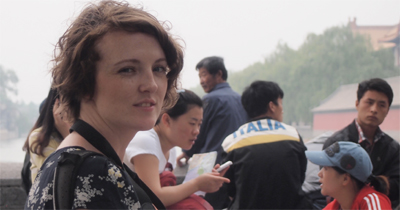The recent spate of news stories about a 1,000-year-old Buddha statue with a mummified monk inside it, which is in the possession of a Dutch collector and which may have been stolen from a temple in China, reminded me of a mummified monk who is the seminal figure in Chan (or Zen) Buddhism.
The mummy is of Hui-neng (638-713 AD), the sixth and last patriarch of Chan, and is housed in Nanhua Temple in Caoxi city, about 22 kilometers from Shaoguan in the north of Guangdong province. It is about three hours by car from the provincial capital, Guangzhou.
The temple is more than 1,500 years old, and has been restored many times over the years.
Two years ago, I hired a car and driver from my hotel in Guangzhou and drove to the temple. I knew the mummy was desecrated during the "cultural revolution" (1966-76), and had been replaced by a restored statue, but I wanted to make my pilgrimage all the same.
The statue of Huineng is in a cross-legged seated position, and is no higher than 1.2 meters. I had expected more pilgrims at the temple, but there were not many people about.
The Buddhist tradition that is known as Chan in China or Zen in Japan traces its origins to the Bodhidharma, or Da Mo as he is known in China, a South Indian or Central Asian who had come to China in the 5th or 6th century. He found his way to Shaolin Temple in Henan province and spent many years there. It was he who taught the Shaolin monks kung fu. He was Chan's first patriarch.
Huineng came from a poor family in Guangdong and was uneducated. But he knew early his vocation was to be a monk and he journeyed to Huang Mei San monastery in Dongshen, Hubei province, where Chan's fifth patriarch Hongren was the abbot.
Hongren assigned him duties in the monastery's rice mills, where he would work for eight months. When the abbot knew he was dying, he told his monks that whoever could write a verse that demonstrated the best understanding of Chan would be made the sixth patriarch.
Everybody assumed it would be Shenxiu, the leading monk. He wrote on a monastery wall:
"The body is a Bodhi tree
The mind a standing mirror bright
At all times polish it diligently
So that no dust alight."
It was scholarly, but Hongren saw that Shenxiu had not quite got the essence of Chan.
Huineng had a monk write a response:
"The Bodhi has no tree
There is no mirror bright
There is nothing at all
So how can dust alight?"
It was an illiterate who best understood Chan after all. Hongren made him the sixth patriarch. I won't recount how Huineng had to flee south, but suffice it for me to say that Chan is not doctrinaire and it puts less store on rote learning of the sutras than on direct, intuitive understanding through rigorous meditation and interaction with the teacher.
Contact the writer at yeow@chinadaily.com.cn
Guadalupe, a 55-year-old lady living in Spain, has been practicing tai chi for almost 20 years. She believes tai chi is not only a kind of martial art but a complete system of fusing traditional Chinese culture.

One of the potentially most traumatic things a girl has to go through is finding a new hairdresser.